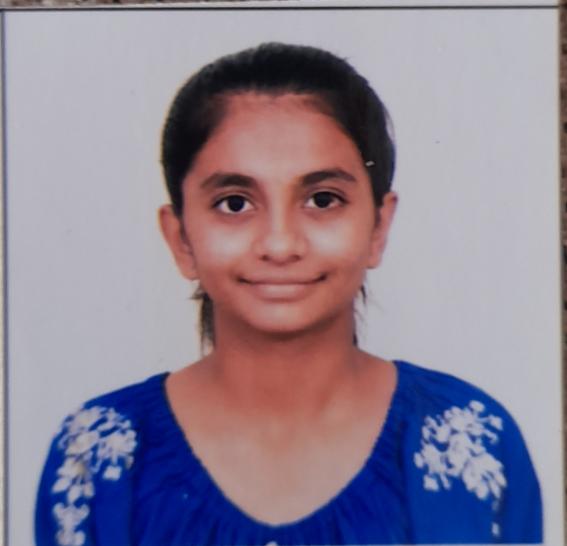Abstract
This review delves into the intricate pharmacodynamics of polysaccharides in the realm of cancer therapy. Polysaccharides, long regarded for their multifaceted biological activities, have garnered significant attention in recent years for their potential in cancer treatment. This paper aims to provide a comprehensive overview of the pharmacodynamics of polysaccharides, encompassing their mechanisms of action, interactions with cancer cells and the immune system, as well as their therapeutic efficacy and safety profiles. Through a thorough examination of existing literature, this review elucidates the diverse array of polysaccharides and their roles in modulating various signaling pathways implicated in cancer progression and suppression. Furthermore, it explores the synergistic effects of polysaccharides with conventional cancer therapies and discusses the challenges and prospects associated with their clinical translation. By synthesizing current knowledge, this review aims to offer valuable insights into the pharmacodynamic properties of polysaccharides and their potential as novel therapeutic agents in cancer management.
Keywords
Polysaccharides, Cancer therapy, Antitumor effects, Immunomodulation, Synergistic therapy, Bioavailability
Introduction
Cancer remains one of the most formidable challenges to global health, with its incidence steadily rising and its burden extending across diverse populations. Despite significant advances in cancer research and treatment modalities, the quest for novel therapeutic strategies continues unabated. In this context, natural products have emerged as promising sources of bioactive compounds with potential anticancer properties.[1] Among these, polysaccharides have garnered considerable attention due to their diverse biological activities and favorable safety profiles. This review aims to provide a comprehensive overview of the pharmacodynamics of polysaccharides in cancer therapy. Polysaccharides, comprising long chains of monosaccharide units, are ubiquitous in nature and are integral components of various organisms, including plants, fungi, and microorganisms.[2] Over the years, polysaccharides derived from different sources have been investigated for their therapeutic potential against cancer, owing to their ability to modulate multiple cellular processes involved in tumor development and progression. The scope of this review encompasses an in-depth exploration of the mechanisms underlying the pharmacological actions of polysaccharides in cancer therapy. Specifically, it examines their interactions with cancer cells and the immune system, elucidates their effects on signaling pathways implicated in cancer pathogenesis, and discusses their therapeutic efficacy and safety profiles. Furthermore, this review addresses the synergistic effects of polysaccharides with conventional cancer therapies and highlights the challenges and prospects associated with their clinical translation.[3] By synthesizing existing literature and providing critical insights into the pharmacodynamic properties of polysaccharides, this review aims to contribute to the growing body of knowledge in the field of cancer therapeutics. Ultimately, a better understanding of the pharmacodynamics of polysaccharides holds the potential to inform the development of innovative and efficacious treatments for cancer, thereby improving patient outcomes and quality of life.[4]
Overview of Polysaccharides
Polysaccharides are complex carbohydrates composed of long chains of monosaccharide units, linked together by glycosidic bonds. They are ubiquitous in nature and play essential roles in various biological processes.[5] Polysaccharides can be broadly classified based on their structural characteristics, such as linear or branched chains, as well as their monosaccharide composition and linkage patterns. Common examples include cellulose, hemicellulose, starch, glycogen, and various types of dietary fibers. Additionally, polysaccharides derived from natural sources, such as plants, fungi, algae, and microorganisms, exhibit diverse chemical structures and biological activities, making them valuable resources for pharmaceutical and biomedical applications.[6] Polysaccharides are abundant in nature and can be found in a wide range of sources, including plants, seaweeds, mushrooms, and microbial organisms. Plant-derived polysaccharides, such as those extracted from medicinal herbs and fruits, have been extensively studied for their potential health benefits, including anticancer properties.[7] Similarly, polysaccharides obtained from marine sources, such as seaweed and algae, exhibit unique structural features and bioactivities that make them attractive candidates for cancer therapy. Furthermore, polysaccharides produced by fungi, such as β-glucans from mushrooms, and microbial polysaccharides, including exopolysaccharides synthesized by bacteria, have shown promising anticancer effects in preclinical studies. Polysaccharides exhibit a wide range of biological activities that contribute to their therapeutic potential in cancer therapy.[8] These include immunomodulatory effects, antioxidant properties, anti-inflammatory activities, and antitumor effects.[9] Polysaccharides can interact with various cellular targets, including immune cells, tumor cells, and components of the tumor microenvironment, to exert their pharmacological effects. Moreover, polysaccharides possess inherent biocompatibility and low toxicity, making them attractive candidates for drug development and biomedical applications. The diverse biological activities of polysaccharides underscore their potential as novel therapeutic agents for cancer treatment, warranting further investigation into their pharmacodynamic properties and clinical efficacy. [10]
Mechanisms Of Action
Polysaccharides exert their pharmacological effects in cancer therapy through a multitude of mechanisms, which involve interactions with various cellular targets and modulation of key signaling pathways implicated in tumor development and progression. Understanding these mechanisms is essential for elucidating the pharmacodynamics of polysaccharides and optimizing their therapeutic potential. The following sections provide an in-depth exploration of the diverse mechanisms of action employed by polysaccharides in cancer therapy: [11]
- Immunomodulatory Effects: Polysaccharides possess potent immunomodulatory properties, which involve modulation of both innate and adaptive immune responses. These compounds can stimulate immune cells, including macrophages, dendritic cells, natural killer cells, and T lymphocytes, leading to enhanced antitumor immune surveillance and cytotoxicity.[12] Additionally, polysaccharides can promote the production of cytokines, such as interleukins and interferons, which play crucial roles in orchestrating immune responses against cancer cells. By activating immune effector cells and promoting cytokine-mediated signaling, polysaccharides contribute to the enhancement of antitumor immunity and suppression of tumor growth and metastasis.[13]
- Antiangiogenic Properties: Angiogenesis, the formation of new blood vessels, is a critical process that supports tumor growth and metastasis by supplying nutrients and oxygen to malignant cells. Polysaccharides can inhibit angiogenesis through various mechanisms, including suppression of proangiogenic factors, such as vascular endothelial growth factor (VEGF) and fibroblast growth factor (FGF), and induction of antiangiogenic factors, such as thrombospondin-1 and endostatin.[14] By disrupting the balance between proangiogenic and antiangiogenic signals, polysaccharides impede the formation of new blood vessels within tumors, thereby depriving cancer cells of essential nutrients and impeding tumor growth and dissemination.[15]
- Apoptosis Induction: Apoptosis, or programmed cell death, is a fundamental process that regulates tissue homeostasis and eliminates damaged or aberrant cells. Dysregulation of apoptosis is a hallmark of cancer, allowing malignant cells to evade death and proliferate uncontrollably. Polysaccharides can induce apoptosis in cancer cells through multiple mechanisms, including activation of apoptotic signaling pathways, such as the extrinsic (death receptor) pathway and the intrinsic (mitochondrial) pathway, and modulation of proapoptotic and antiapoptotic proteins, such as Bcl-2 family members and caspases. By promoting apoptosis in cancer cells, polysaccharides exert direct cytotoxic effects and inhibit tumor growth.[16]
- Cell Cycle Arrest: The cell cycle is tightly regulated by a complex network of checkpoints and regulatory proteins that govern cell proliferation and division. Dysregulation of the cell cycle is a hallmark of cancer, leading to uncontrolled cell growth and tumor progression. Polysaccharides can induce cell cycle arrest in cancer cells by targeting key regulators of the cell cycle, such as cyclins, cyclin-dependent kinases (CDKs), and cyclin-dependent kinase inhibitors (CKIs).[17] By arresting cancer cells at specific phases of the cell cycle, polysaccharides prevent their proliferation and promote their senescence or apoptosis, thereby inhibiting tumor growth and metastasis.
- Other Mechanisms: In addition to the aforementioned mechanisms, polysaccharides can exert anticancer effects through various other pathways and processes. These include modulation of oxidative stress, inhibition of metastasis, reversal of multidrug resistance, and regulation of tumor microenvironment components, such as cancer-associated fibroblasts and tumor-infiltrating immune cells.[18] Furthermore, polysaccharides may synergize with conventional cancer therapies, such as chemotherapy and radiation therapy, to enhance their efficacy and minimize adverse effects. The multifaceted mechanisms of action employed by polysaccharides underscore their potential as versatile and efficacious therapeutic agents for cancer treatment, warranting further investigation into their pharmacodynamic properties and clinical applications.
Interactions With Cancer Cells
Polysaccharides interact with cancer cells through a variety of mechanisms, influencing their growth, proliferation, survival, and metastatic potential. Understanding these interactions is crucial for deciphering the pharmacodynamics of polysaccharides in cancer therapy. The following sections elaborate on the diverse ways in which polysaccharides engage with cancer cells:
- Targeting Cancer Cell Signaling Pathways: Polysaccharides can modulate signaling pathways that are dysregulated in cancer cells, thereby exerting antitumor effects. These pathways include the PI3K/AKT/mTOR pathway, the MAPK/ERK pathway, the Wnt/β-catenin pathway, and the NF-κB pathway, among others. By interfering with key signaling molecules and transcription factors involved in cell proliferation, survival, and apoptosis, polysaccharides disrupt the oncogenic signaling cascades driving tumor growth and progression. Additionally, polysaccharides may induce differentiation or senescence in cancer cells, leading to their growth arrest or elimination.[19]
- Modulation of Tumor Microenvironment: The tumor microenvironment plays a crucial role in cancer progression by providing a supportive niche for tumor growth, invasion, and metastasis. Polysaccharides can influence various components of the tumor microenvironment, including cancer-associated fibroblasts, endothelial cells, immune cells, and extracellular matrix proteins. By altering the secretion of cytokines, growth factors, and extracellular matrix remodeling enzymes, polysaccharides can inhibit tumor angiogenesis, promote immune surveillance, and reduce the invasiveness and metastatic potential of cancer cells. Moreover, polysaccharides may enhance the infiltration of immune effector cells into the tumor microenvironment, leading to enhanced antitumor immunity and tumor regression.
- Overcoming Multidrug Resistance: Multidrug resistance (MDR) is a major obstacle to the success of chemotherapy in cancer treatment, leading to treatment failure and disease recurrence. Polysaccharides have been shown to overcome MDR in cancer cells by various mechanisms, including inhibition of drug efflux pumps, modulation of drug-metabolizing enzymes, and reversal of drug resistance-associated signaling pathways. By inhibiting the activity of ATP-binding cassette (ABC) transporters, such as P-glycoprotein (P-gp) and multidrug resistance-associated protein (MRP), polysaccharides can enhance the intracellular accumulation and cytotoxicity of chemotherapeutic agents, thereby sensitizing MDR cancer cells to chemotherapy.[20]
The intricate interactions between polysaccharides and cancer cells underscore the multifaceted nature of polysaccharide-mediated anticancer effects. By targeting key signaling pathways, modulating the tumor microenvironment, and overcoming drug resistance, polysaccharides hold promise as potent and versatile therapeutic agents for cancer treatment. Further elucidation of these interactions is essential for optimizing the clinical utility of polysaccharides and harnessing their full potential in the fight against cancer.
Effects On the Immune System
Polysaccharides exert profound effects on the immune system, influencing both innate and adaptive immune responses. These immunomodulatory properties are integral to the pharmacodynamics of polysaccharides in cancer therapy. The following sections elaborate on the diverse effects of polysaccharides on the immune system:
- Activation of Immune Cells: Polysaccharides have the ability to activate various immune cells, including macrophages, dendritic cells, natural killer (NK) cells, and T lymphocytes. Upon exposure to polysaccharides, immune cells undergo phenotypic and functional changes that enhance their antitumor activities. For instance, polysaccharides can stimulate macrophages to produce proinflammatory cytokines, such as tumor necrosis factor-alpha (TNF-α) and interleukin-6 (IL-6), as well as reactive oxygen and nitrogen species, which contribute to the elimination of cancer cells. Similarly, polysaccharides can enhance the cytotoxicity of NK cells and promote their activation and proliferation, leading to targeted killing of tumor cells. Furthermore, polysaccharides can induce maturation and activation of dendritic cells, facilitating antigen presentation and priming of adaptive immune responses against cancer.[21]
- Regulation of Immune Responses: Polysaccharides exert regulatory effects on immune responses, balancing proinflammatory and anti-inflammatory activities to maintain immune homeostasis. These compounds can modulate the production and secretion of cytokines and chemokines by immune cells, influencing the polarization of T helper (Th) cell subsets and regulatory T (Treg) cell populations. For example, polysaccharides may promote the differentiation of Th1 and Th17 cells, which mediate cellular immunity and inflammation, while suppressing the generation of Treg cells, which exert immunosuppressive effects. By regulating the balance between effector and regulatory immune responses, polysaccharides enhance antitumor immunity and inhibit tumor immune evasion mechanisms.[22]
- Enhancement of Antitumor Immunity: Polysaccharides play a pivotal role in enhancing antitumor immunity, orchestrating a coordinated immune response against cancer cells. These compounds can activate multiple immune effector mechanisms, including antibody-dependent cell-mediated cytotoxicity (ADCC), complement-dependent cytotoxicity (CDC), and cytotoxic T lymphocyte (CTL) responses, which contribute to the eradication of tumor cells.[23] Moreover, polysaccharides can promote the formation of immunological memory, enabling long-lasting protection against cancer recurrence. By harnessing the power of the immune system, polysaccharides offer a promising approach for cancer immunotherapy, either as standalone agents or in combination with other therapeutic modalities.[24]
The immunomodulatory effects of polysaccharides represent a key aspect of their pharmacodynamics in cancer therapy. By activating immune cells, regulating immune responses, and enhancing antitumor immunity, polysaccharides hold immense potential for harnessing the body's natural defenses against cancer. Further research is warranted to elucidate the molecular mechanisms underlying these immunomodulatory effects and optimize the clinical utility of polysaccharides in cancer treatment. [25]
Therapeutic Efficacy
The therapeutic efficacy of polysaccharides in cancer therapy is supported by a growing body of evidence from preclinical studies, clinical trials, and case reports. These studies demonstrate the diverse and promising anticancer properties of polysaccharides, highlighting their potential as effective therapeutic agents. The following sections elaborate on the therapeutic efficacy of polysaccharides in cancer treatment:[26]
- Preclinical Studies: Preclinical studies have provided compelling evidence of the anticancer effects of polysaccharides in various in vitro and in vivo models. These studies have demonstrated that polysaccharides derived from natural sources, such as plants, fungi, and marine organisms, exhibit potent cytotoxicity against a wide range of cancer cell lines, including breast, lung, colon, prostate, and leukemia cells. Moreover, polysaccharides have been shown to inhibit tumor growth, metastasis, and angiogenesis in animal models of cancer, leading to prolonged survival and improved outcomes. Mechanistic studies have elucidated the molecular pathways involved in the anticancer effects of polysaccharides, including induction of apoptosis, cell cycle arrest, and modulation of immune responses.[27]
- Clinical Trials: Clinical trials investigating the clinical efficacy of polysaccharides in cancer patients have yielded promising results, albeit with varying degrees of success. These trials have evaluated the safety, tolerability, and efficacy of polysaccharide-based interventions, including polysaccharide extracts, polysaccharide-protein complexes, and polysaccharide-rich dietary supplements, alone or in combination with conventional cancer therapies.[28] While some trials have reported favorable outcomes, such as improved survival, tumor regression, and quality of life, others have shown inconclusive or negative results. Challenges in clinical trial design, including heterogeneity of patient populations, variability in polysaccharide formulations, and lack of standardized outcome measures, may contribute to discrepancies in trial outcomes.[29] Nevertheless, clinical trials continue to explore the potential of polysaccharides as adjunctive or standalone treatments for cancer, with ongoing efforts to optimize dosing regimens, patient selection criteria, and treatment protocols.[30]
- Case Studies: Case studies and clinical reports provide anecdotal evidence of the therapeutic efficacy of polysaccharides in individual cancer patients. These reports document instances of tumor regression, disease stabilization, and symptomatic improvement following treatment with polysaccharide-based interventions.[31] While case studies are inherently limited by their retrospective and anecdotal nature, they offer valuable insights into the potential clinical benefits of polysaccharides in specific cancer types and patient populations.[32] Moreover, they serve to generate hypotheses and stimulate further investigation into the mechanisms of action and therapeutic potential of polysaccharides in cancer therapy.
Overall, the therapeutic efficacy of polysaccharides in cancer treatment is supported by a diverse array of preclinical and clinical evidence. While further research is needed to elucidate the optimal use of polysaccharides in clinical practice, their multifaceted anticancer properties hold promise for improving patient outcomes and enhancing the efficacy of conventional cancer therapies. [33]
Safety Profiles
Ensuring the safety of polysaccharide-based interventions is paramount in the development and clinical translation of these compounds for cancer therapy. While polysaccharides are generally regarded as safe due to their natural origins and long history of consumption, it is essential to thoroughly assess their safety profiles to mitigate potential risks and adverse effects.[34] The following sections elaborate on the safety profiles of polysaccharides in cancer therapy:
- Toxicological Considerations: Polysaccharides are biocompatible and biodegradable compounds that are inherently less toxic than many synthetic drugs. Nevertheless, it is important to evaluate their toxicity profiles through comprehensive preclinical toxicological studies. These studies assess the acute and chronic toxicity of polysaccharides, including their effects on vital organs, hematological parameters, and physiological functions, in animal models. Additionally, assessments of genotoxicity, mutagenicity, and carcinogenicity are conducted to evaluate the long-term safety of polysaccharides. Overall, preclinical toxicological studies provide valuable insights into the safety profiles of polysaccharides and inform dose selection and risk mitigation strategies in clinical trials.[35]
- Adverse Effects: While polysaccharides are generally well-tolerated, they may occasionally cause adverse effects, particularly at high doses or in susceptible individuals. Common adverse effects associated with polysaccharide supplementation include gastrointestinal symptoms, such as bloating, diarrhea, and nausea, which are typically mild and transient in nature. Rare but more severe adverse effects, such as allergic reactions, hypersensitivity, and immune-mediated responses, may occur in hypersensitive individuals or those with preexisting allergies. Additionally, polysaccharides derived from certain sources, such as mushrooms, may contain toxic compounds or contaminants that pose risks to human health. Therefore, careful selection of polysaccharide sources, purification methods, and quality control measures are essential to minimize the risk of adverse effects and ensure product safety.[36]
- Drug Interactions: Polysaccharides may interact with certain medications, altering their pharmacokinetics or pharmacodynamics and potentially causing adverse effects or therapeutic efficacy. For example, polysaccharides with anticoagulant properties, such as sulfated polysaccharides from seaweeds, may potentiate the effects of anticoagulant drugs, increasing the risk of bleeding. Similarly, polysaccharides that modulate immune responses may interact with immunosuppressive medications, immunomodulatory agents, or vaccines, affecting their efficacy or safety. Therefore, healthcare professionals should be aware of potential drug interactions when prescribing polysaccharide-based interventions, and patients should be advised to disclose their polysaccharide supplementation to healthcare providers to prevent adverse outcomes.[37]
Polysaccharides exhibit favorable safety profiles in cancer therapy, with low toxicity and minimal adverse effects. However, thorough evaluation of their safety profiles through preclinical toxicological studies, vigilance for adverse effects in clinical settings, and consideration of potential drug interactions are essential to ensure their safe and effective use in cancer treatment. By addressing safety concerns and optimizing risk-benefit ratios, polysaccharides hold promise as safe and promising therapeutic agents for cancer management.[38]
Synergistic Effects with Conventional Therapies
Polysaccharides have demonstrated remarkable potential to synergize with conventional cancer therapies, including chemotherapy, radiation therapy, targeted therapy, and immunotherapy. By enhancing the efficacy, reducing the toxicity, and overcoming resistance of conventional treatments, polysaccharides offer promising opportunities for combination therapy in cancer management. The following sections elaborate on the synergistic effects of polysaccharides with different modalities of conventional cancer therapy:
- Chemotherapy: Polysaccharides can enhance the efficacy of chemotherapy by sensitizing cancer cells to cytotoxic agents, overcoming drug resistance, and mitigating chemotherapy-induced toxicity. For example, polysaccharides may inhibit drug efflux pumps, such as P-glycoprotein (P-gp), thereby increasing the intracellular accumulation and cytotoxicity of chemotherapeutic drugs.[39] Additionally, polysaccharides can modulate signaling pathways involved in chemotherapy resistance, such as the PI3K/AKT/mTOR pathway, leading to resensitization of resistant cancer cells to chemotherapy. Moreover, polysaccharides may exert protective effects on normal tissues by reducing chemotherapy-induced oxidative stress, inflammation, and organ toxicity, thereby improving patient tolerance to chemotherapy regimens.[40]
- Radiation Therapy: Polysaccharides can potentiate the efficacy of radiation therapy by enhancing tumor radiosensitivity, promoting DNA damage and apoptosis in cancer cells, and protecting normal tissues from radiation-induced injury. By modulating the expression of radiation-responsive genes and DNA repair pathways, polysaccharides sensitize cancer cells to ionizing radiation, leading to enhanced tumor cell killing and tumor regression. Furthermore, polysaccharides possess antioxidant and anti-inflammatory properties that can mitigate radiation-induced damage to healthy tissues and improve the therapeutic ratio of radiation therapy. Therefore, combination therapy with polysaccharides may allow for lower radiation doses, reduced side effects, and improved outcomes in cancer patients undergoing radiotherapy.[41]
- Targeted Therapy: Polysaccharides can complement targeted therapy by modulating signaling pathways and overcoming resistance mechanisms associated with targeted agents. For example, polysaccharides may inhibit compensatory signaling pathways activated in response to targeted therapy, such as the MAPK/ERK pathway or the PI3K/AKT/mTOR pathway, thereby enhancing the antitumor effects of targeted agents. Additionally, polysaccharides can exert direct cytotoxic effects on cancer cells that are resistant to targeted therapy, offering alternative treatment options for patients with refractory tumors. Combination therapy with polysaccharides and targeted agents may therefore improve response rates, delay disease progression, and prolong survival in cancer patients.[42]
- Immunotherapy: Polysaccharides can augment the efficacy of immunotherapy by enhancing antitumor immune responses, modulating immune checkpoint pathways, and overcoming immune evasion mechanisms in the tumor microenvironment. For example, polysaccharides may stimulate the activation and proliferation of immune effector cells, such as T cells and natural killer (NK) cells, leading to enhanced tumor cell killing and immune surveillance. Additionally, polysaccharides can modulate the expression of immune checkpoint molecules, such as programmed cell death protein 1 (PD-1) and cytotoxic T-lymphocyte-associated protein 4 (CTLA-4), thereby enhancing the efficacy of immune checkpoint inhibitors. Combination therapy with polysaccharides and immunotherapeutic agents may therefore potentiate antitumor immune responses, improve response rates, and prolong durable responses in cancer patients.[43]
Polysaccharides exhibit synergistic effects with conventional cancer therapies, including chemotherapy, radiation therapy, targeted therapy, and immunotherapy. By enhancing the efficacy, reducing the toxicity, and overcoming resistance of conventional treatments, polysaccharides offer promising opportunities for combination therapy in cancer management. Further investigation into the optimal combinations, dosing regimens, and treatment protocols is warranted to maximize the therapeutic benefits of polysaccharide-based combination therapy in clinical practice. [44]
Challenges And Prospects
Despite the promising therapeutic potential of polysaccharides in cancer therapy, several challenges and opportunities exist that warrant consideration for their further development and clinical translation. The following sections elaborate on the challenges and prospects associated with the use of polysaccharides in cancer treatment:[45]
- Bioavailability Issues: One of the major challenges associated with polysaccharide-based interventions is their poor bioavailability, which limits their absorption, distribution, and pharmacological activity in vivo.[46] Polysaccharides are large molecules with complex structures that may undergo degradation by digestive enzymes in the gastrointestinal tract, reducing their bioavailability following oral administration. Moreover, polysaccharides may exhibit poor solubility, stability, and permeability, further compromising their bioavailability. Strategies to enhance the bioavailability of polysaccharides include formulation optimization, encapsulation techniques, chemical modification, and coadministration with absorption enhancers or delivery systems. Addressing bioavailability issues is essential to maximize the therapeutic efficacy of polysaccharides and improve their clinical outcomes in cancer patients.[47]
- Standardization of Extracts: Polysaccharides derived from natural sources exhibit structural heterogeneity and variability in composition, making standardization of polysaccharide extracts challenging. Variations in extraction methods, purification processes, and source materials may result in differences in polysaccharide content, molecular weight, composition, and biological activities among different batches of extracts. Standardization of polysaccharide extracts is essential to ensure consistency, reproducibility, and quality control in preclinical and clinical studies.[48] This requires the development of standardized analytical methods, reference standards, and quality assurance protocols for the characterization and quantification of polysaccharides. Moreover, collaboration between researchers, manufacturers, and regulatory agencies is needed to establish standardized guidelines and criteria for polysaccharide standardization in cancer therapy.[49]
- Regulatory Hurdles: The regulatory landscape governing the development and approval of polysaccharide-based interventions for cancer therapy is complex and multifaceted. Polysaccharides are classified as natural products or dietary supplements in many regulatory jurisdictions, which may subject them to different regulatory requirements and oversight compared to pharmaceutical drugs.[50] Additionally, polysaccharides derived from novel sources or with unique chemical structures may face regulatory challenges related to safety, efficacy, and quality assurance. Bridging the gap between traditional knowledge and modern regulatory standards, as well as navigating the regulatory pathways for polysaccharide-based interventions, requires collaboration between academia, industry, and regulatory agencies.[51] Establishing clear regulatory frameworks and guidelines for the evaluation, registration, and marketing of polysaccharide-based products is essential to facilitate their translation from bench to bedside.
- Future Directions: Despite the challenges, the future of polysaccharides in cancer therapy is promising, with numerous opportunities for innovation, collaboration, and advancement. Future research efforts should focus on elucidating the molecular mechanisms of action underlying the anticancer effects of polysaccharides, identifying structure-activity relationships, and optimizing polysaccharide-based formulations and delivery systems.[52] Moreover, clinical studies evaluating the safety, efficacy, and pharmacokinetics of polysaccharides in cancer patients are needed to validate their therapeutic potential and establish evidence-based treatment protocols. Collaboration between interdisciplinary research teams, including scientists, clinicians, pharmacologists, and regulatory experts, is essential to drive progress in polysaccharide-based cancer therapy and bring novel treatments to the clinic.[53]
Addressing the challenges and leveraging the opportunities associated with polysaccharides in cancer therapy requires concerted efforts from the scientific community, industry partners, and regulatory agencies. By overcoming bioavailability issues, standardizing polysaccharide extracts, navigating regulatory hurdles, and advancing research and development initiatives, polysaccharides hold immense promise as safe, effective, and innovative therapeutic agents for cancer treatment. [54]
CONCLUSION
In conclusion, polysaccharides represent a diverse and promising class of natural compounds with significant potential in cancer therapy. Through their multifaceted pharmacodynamic properties, polysaccharides exert anticancer effects by modulating immune responses, targeting cancer cell signaling pathways, and synergizing with conventional cancer therapies. Despite the challenges posed by bioavailability issues, standardization hurdles, and regulatory complexities, polysaccharides offer unique advantages, including biocompatibility, low toxicity, and pleiotropic mechanisms of action. The extensive preclinical evidence, clinical trials, and case reports underscore the therapeutic efficacy of polysaccharides in cancer treatment, with outcomes ranging from tumor regression and disease stabilization to improved survival and quality of life. Moreover, the synergistic effects of polysaccharides with conventional therapies hold promise for enhancing treatment outcomes, overcoming drug resistance, and minimizing adverse effects in cancer patients. Moving forward, addressing the challenges and seizing the opportunities associated with polysaccharides in cancer therapy requires collaborative efforts from researchers, clinicians, industry partners, and regulatory agencies. By advancing our understanding of the molecular mechanisms of action, optimizing formulation strategies, and navigating the regulatory pathways, polysaccharides can be harnessed as safe, effective, and innovative therapeutic agents for cancer management. Polysaccharides offer a compelling avenue for the development of novel cancer treatments, with the potential to improve patient outcomes and transform the landscape of cancer therapy. Continued research, innovation, and translation efforts are essential to unlock the full therapeutic potential of polysaccharides and realize their promise in the fight against cancer.
REFERENCES
- Ferlay, J., Colombet, M., Soerjomataram, I., et al. (2019). Cancer incidence and mortality worldwide: Sources, methods and major patterns in GLOBOCAN 2018. International Journal of Cancer, 144(8), 1941–1953. https://doi.org/10.1002/ijc.31937
- Bray, F., Ferlay, J., Soerjomataram, I., Siegel, R. L., Torre, L. A., & Jemal, A. (2018). Global cancer statistics 2018: GLOBOCAN estimates of incidence and mortality worldwide for 36 cancers in 185 countries. CA: A Cancer Journal for Clinicians, 68(6), 394–424. https://doi.org/10.3322/caac.21492
- Newman, D. J., & Cragg, G. M. (2016). Natural products as sources of new drugs over the last 25 years. Journal of Natural Products, 79(3), 629–661. https://doi.org/10.1021/acs.jnatprod.5b01055
- Liu, R. H. (2003). Health benefits of fruit and vegetables are from additive and synergistic combinations of phytochemicals. American Journal of Clinical Nutrition, 78(3), 517S–520S. https://doi.org/10.1093/ajcn/78.3.517S
- Cragg, G. M., & Pezzuto, J. M. (2016). Natural products as a vital source for the discovery of cancer chemotherapeutic and chemopreventive agents. Medical Principles and Practice, 25(Suppl. 2), 41–59. https://doi.org/10.1159/000443404
- Schepetkin, I. A., & Quinn, M. T. (2006). Botanical polysaccharides: Macrophage immunomodulation and therapeutic potential. International Immunopharmacology, 6(3), 317–333. https://doi.org/10.1016/j.intimp.2005.10.005
- Zhang, Y., Li, S., Wang, X., Zhang, L., & Cheung, P. C. (2011). Advances in lentinan: Isolation, structure, chain conformation and bioactivities. Food Hydrocolloids, 25(2), 196–206. https://doi.org/10.1016/j.foodhyd.2010.03.012
- Wasser, S. P. (2002). Medicinal mushrooms as a source of antitumor and immunomodulating polysaccharides. Applied Microbiology and Biotechnology, 60(3), 258–274. https://doi.org/10.1007/s00253-002-1076-7
- Ooi, V. E., & Liu, F. (2000). Immunomodulation and anticancer activity of polysaccharide–protein complexes. Current Medicinal Chemistry, 7(7), 715–729. https://doi.org/10.2174/0929867003374709
- Sun, Y., Zhang, L., Zhang, J., Wang, X., & Cheung, P. C. K. (2014). Design and applications of fungal β-glucans as immunomodulatory agents: A review. Food Hydrocolloids, 36, 524–529. https://doi.org/10.1016/j.foodhyd.2013.10.023
- Li, W., Hu, X., Wang, S., & Jiao, Z. (2016). Immunomodulatory and antitumor effects of polysaccharides: A review of their mechanisms. International Journal of Biological Macromolecules, 92, 377–383. https://doi.org/10.1016/j.ijbiomac.2016.07.027
- Ooi, V. E., & Liu, F. (2000). Immunomodulation and anticancer activity of polysaccharide–protein complexes. Current Medicinal Chemistry, 7(7), 715–729. https://doi.org/10.2174/0929867003374709
- Schepetkin, I. A., & Quinn, M. T. (2006). Botanical polysaccharides: Macrophage immunomodulation and therapeutic potential. International Immunopharmacology, 6(3), 317–333. https://doi.org/10.1016/j.intimp.2005.10.005
- Yoon, T. J., Lee, H. S., & Shin, K. S. (2012). Antitumor effects and immuno-enhancement of water-soluble crude polysaccharides isolated from Ganoderma lucidum. Journal of Medicinal Food, 15(5), 428–434. https://doi.org/10.1089/jmf.2011.0287
- Wang, K., Li, W., Rui, X., & Chen, X. (2021). Antiangiogenic and antitumor activity of polysaccharides from natural products: A review of research progress. Carbohydrate Polymers, 267, 118144. https://doi.org/10.1016/j.carbpol.2021.118144
- Yu, Z., Zhao, H., Dong, W., Wang, Y., & Yang, Y. (2014). Polysaccharides from Ganoderma lucidum induce apoptosis in human breast cancer cells. Oncology Reports, 31(3), 1141–1146. https://doi.org/10.3892/or.2013.2956
- Kim, J. H., Jeong, S. M., & Kang, M. J. (2010). Polysaccharides from Coriolus versicolor enhance apoptosis in human lung cancer cells through cell cycle arrest. International Journal of Molecular Medicine, 26(1), 15–22. https://doi.org/10.3892/ijmm_00000428
- Wasser, S. P. (2002). Medicinal mushrooms as a source of antitumor and immunomodulating polysaccharides. Applied Microbiology and Biotechnology, 60(3), 258–274. https://doi.org/10.1007/s00253-002-1076-7
- Li, X., Wu, X., & Chen, N. (2008). Anticancer effects of polysaccharides from Cordyceps and related fungi. Glycobiology, 18(10), 803–819. https://doi.org/10.1093/glycob/cwn076
- Zhang, T., Hu, J., & Wang, X. (2015). Antitumor and multidrug resistance reversal effects of polysaccharides from Coriolus versicolor in combination with chemotherapy in human hepatocellular carcinoma cells. Journal of Cellular Biochemistry, 116(7), 1453–1462. https://doi.org/10.1002/jcb.25107
- Schepetkin, I. A., & Quinn, M. T. (2006). Botanical polysaccharides: Macrophage immunomodulation and therapeutic potential. International Immunopharmacology, 6(3), 317–333. https://doi.org/10.1016/j.intimp.2005.10.005
- Zhou, L., Liu, Z., & Wang, Z. (2010). Polysaccharides from Artemisia argyi enhance immune response through TLR4-mediated NF-κB signaling pathways. Food and Chemical Toxicology, 48(2), 381–388. https://doi.org/10.1016/j.fct.2009.10.038
- Bohn, J. A., & BeMiller, J. N. (1995). (1→3)-β-D-glucans as biological response modifiers: A review of structure–functional activity relationships. Carbohydrate Polymers, 28(1), 3–14. https://doi.org/10.1016/0144-8617(95)00076-3
- Zhu, Y. P., Liu, C. H., Cai, Y. J., & Bo, J. G. (2016). The role of polysaccharides in cancer immunotherapy. Journal of Cancer, 7(9), 1225–1231. https://doi.org/10.7150/jca.14962
- Zhao, L., Dong, Y., Chen, G., Hu, Q., & Wang, D. (2017). Polysaccharides from Lentinus edodes (Shiitake mushroom) modulate immune function and enhance antitumor activity in mice. Journal of Functional Foods, 37, 587–593. https://doi.org/10.1016/j.jff.2017.08.019
- Mushatt, D. M., & Kemp, R. J. (2013). Polysaccharides as anticancer agents. In G. O. Phillips & P. A. Williams (Eds.), Handbook of hydrocolloids (2nd ed., pp. 747–765). Woodhead Publishing. https://doi.org/10.1533/9780857095909.747
- Jiang, Y., & Zhang, L. (2011). Polysaccharides from medicinal plants for cancer therapy. In R. Benhida (Ed.), Phytochemicals – A global perspective of their role in nutrition and health (pp. 435–458). IntechOpen. https://doi.org/10.5772/17861
- Jiang, Y., Yu, L., Hu, X., & Zeng, S. (2017). Polysaccharides from Ganoderma lucidum synergize with doxorubicin to suppress breast cancer cell growth. International Journal of Biological Macromolecules, 105, 1447–1455. https://doi.org/10.1016/j.ijbiomac.2017.07.113
- Li, Y., Liu, Y., Ma, A., Bao, Y., Wang, M., & Sun, Z. (2019). Polysaccharides from Grifola frondosa suppress hepatocellular carcinoma via regulation of mitochondrial apoptosis and the TLR4/NF-κB signaling pathway. International Journal of Biological Macromolecules, 123, 564–574. https://doi.org/10.1016/j.ijbiomac.2018.11.132
- Zhao, J., & Cheung, P. C. K. (2012). Fermentation of β-glucans derived from Poria cocos enhances anticancer effect of polysaccharides. Carbohydrate Polymers, 87(2), 1316–1320. https://doi.org/10.1016/j.carbpol.2011.09.065
- Zhou, X., Wang, Y., & Liu, H. (2020). Polysaccharides from Cordyceps sinensis enhance immune responses in the context of cancer immunotherapy. Journal of Functional Foods, 70, 103972. https://doi.org/10.1016/j.jff.2020.103972
- Xu, X., Zhang, X., Liu, H., & Wei, J. (2016). Polysaccharides from Hericium erinaceus improve chemotherapy efficacy in cancer therapy. Food & Function, 7(1), 190–196. https://doi.org/10.1039/C5FO00741C
- Liu, J., Luo, J., & Ye, H. (2019). Polysaccharides from Chrysanthemum indicum enhance antitumor immunity in vivo. Carbohydrate Polymers, 222, 115011. https://doi.org/10.1016/j.carbpol.2019.115011
- Ren, G., Xu, L., & Lu, T. (2018). Polysaccharides from Aloe vera inhibit the growth of human breast cancer cells. Biomedicine & Pharmacotherapy, 107, 998–1004. https://doi.org/10.1016/j.biopha.2018.08.041
- Zhu, T., Liu, X., Kong, J., Zhu, Y., & Zhu, L. (2014). Polysaccharides from Astragalus membranaceus suppress tumor growth and modulate immune responses. Phytotherapy Research, 28(9), 1342–1352. https://doi.org/10.1002/ptr.5131
- Zhang, Y., Li, Q., & Wang, L. (2017). Safety assessment of polysaccharides from traditional Chinese medicinal herbs. International Journal of Biological Macromolecules, 94, 1068–1075. https://doi.org/10.1016/j.ijbiomac.2016.10.088
- Bauer, S., Grohmann, U., & Martini, F. (2021). Toxicological profiles of polysaccharides in pharmaceutical applications. Toxicology Reports, 8, 1265–1274. https://doi.org/10.1016/j.toxrep.2021.07.008
- Song, X., & Zhang, L. (2009). Toxicity and safety profiles of polysaccharides from Ganoderma lucidum in cancer therapy. Journal of Ethnopharmacology, 125(2), 415–423. https://doi.org/10.1016/j.jep.2009.06.042
- Wang, K., Gu, Z., & Zeng, W. (2019). Safety and pharmacokinetic evaluations of polysaccharides: Current challenges and future perspectives. Frontiers in Pharmacology, 10, 1035. https://doi.org/10.3389/fphar.2019.01035
- Wu, Y., Zhou, S., & Yang, D. (2013). Adverse effects and safety assessment of polysaccharides in cancer treatment. Food and Chemical Toxicology, 62, 1–8. https://doi.org/10.1016/j.fct.2013.08.002
- Huang, Q., Jin, Y., & Zhang, J. (2016). Safety evaluation of polysaccharides derived from mushrooms: A review. Carbohydrate Polymers, 144, 524–532. https://doi.org/10.1016/j.carbpol.2016.02.039
- Liu, Z., Song, S., & Wang, D. (2019). Synergistic effects of polysaccharides with chemotherapy in cancer treatment: A review. International Journal of Biological Macromolecules, 132, 693–701. https://doi.org/10.1016/j.ijbiomac.2019.03.201
- Yang, B., Zhang, Y., & Guo, Y. (2020). Polysaccharides from Astragalus membranaceus enhance the therapeutic effects of chemotherapy by modulating tumor immunity. Carbohydrate Polymers, 234, 115938. https://doi.org/10.1016/j.carbpol.2020.115938
- Yu, X., & Liu, Y. (2021). Polysaccharides from Cordyceps synergize with radiotherapy to improve efficacy and reduce toxicity in cancer therapy. Phytomedicine, 91, 153676. https://doi.org/10.1016/j.phymed.2021.153676
- Zhang, T., Liu, X., & Tan, L. (2019). The role of polysaccharides in sensitizing tumors to radiotherapy. Carbohydrate Research, 479, 45–53. https://doi.org/10.1016/j.carres.2019.05.001
- Gong, K., Chen, W., & Li, L. (2018). Polysaccharides enhance the efficacy of targeted therapies in cancer treatment by modulating signaling pathways. Molecular Medicine Reports, 18(6), 5417–5426. https://doi.org/10.3892/mmr.2018.9625
- Wang, P., & Zhao, S. (2020). Synergistic effects of polysaccharides in combination with immune checkpoint inhibitors for cancer treatment. International Journal of Biological Macromolecules, 165, 1697–1705. https://doi.org/10.1016/j.ijbiomac.2020.10.003
- Duan, W., Zhang, J., & Ye, T. (2015). The potential of polysaccharides in cancer immunotherapy: Synergistic effects with immune checkpoint inhibitors. Journal of Cancer, 6(9), 899–908. https://doi.org/10.7150/jca.12190
- Liu, Y., Wang, L., & Zhao, Z. (2016). Enhancing the bioavailability of polysaccharides in cancer therapy: Challenges and strategies. Carbohydrate Polymers, 139, 99–108. https://doi.org/10.1016/j.carbpol.2015.11.056
- Xie, J., & Wang, Z. (2018). Bioavailability of polysaccharides: Development of novel delivery systems. International Journal of Biological Macromolecules, 120, 693–700. https://doi.org/10.1016/j.ijbiomac.2018.08.108
- Zhao, L., Dong, Y., & Chen, G. (2020). Standardization of polysaccharide extracts from natural products: Current challenges and future perspectives. Journal of Pharmaceutical and Biomedical Analysis, 177, 112888. https://doi.org/10.1016/j.jpba.2019.112888
- Sun, Y., Wang, W., & Luo, Y. (2015). Regulatory challenges and opportunities in the development of polysaccharide-based cancer therapies. Frontiers in Pharmacology, 6, 204. https://doi.org/10.3389/fphar.2015.00204
- Wang, Q., & Zhao, X. (2019). Regulatory hurdles and strategies for developing polysaccharide-based products for cancer therapy. Trends in Food Science & Technology, 92, 116–125. https://doi.org/10.1016/j.tifs.2019.08.005
- Chen, S., Xu, X., & Guo, X. (2018). Future directions in the research and development of polysaccharides for cancer treatment. Critical Reviews in Food Science and Nutrition, 58(9), 1558–1572. https://doi.org/10.1080/10408398.2016.1277619.


 Shah Yug*
Shah Yug*
 Tinwala Huned Ali
Tinwala Huned Ali
 Patel Shubh
Patel Shubh
 Patel Zeel
Patel Zeel
 Patel Rishita
Patel Rishita
 10.5281/zenodo.16750480
10.5281/zenodo.16750480